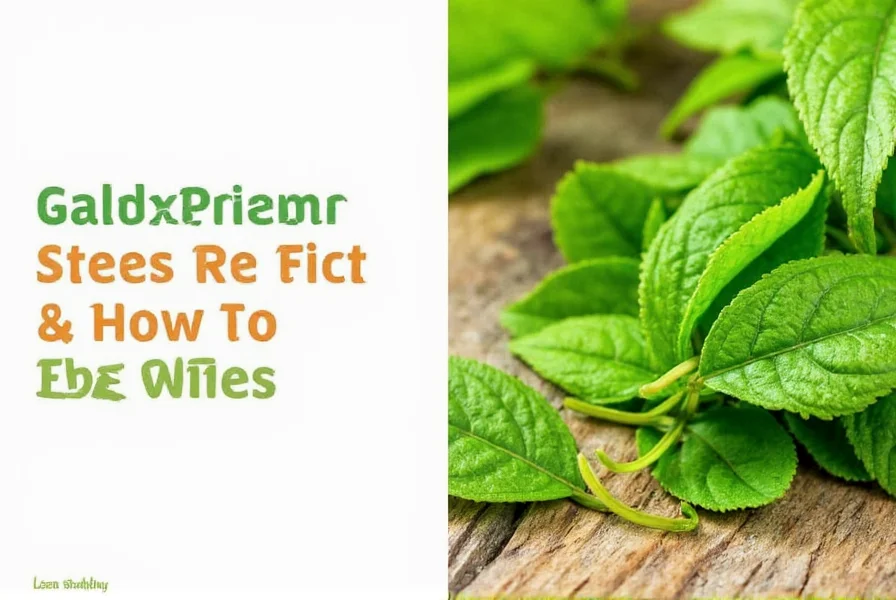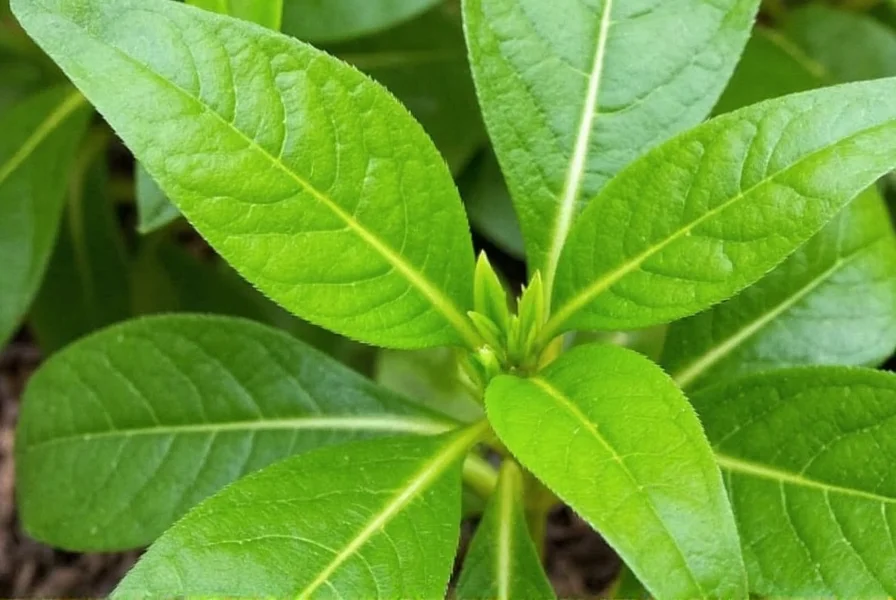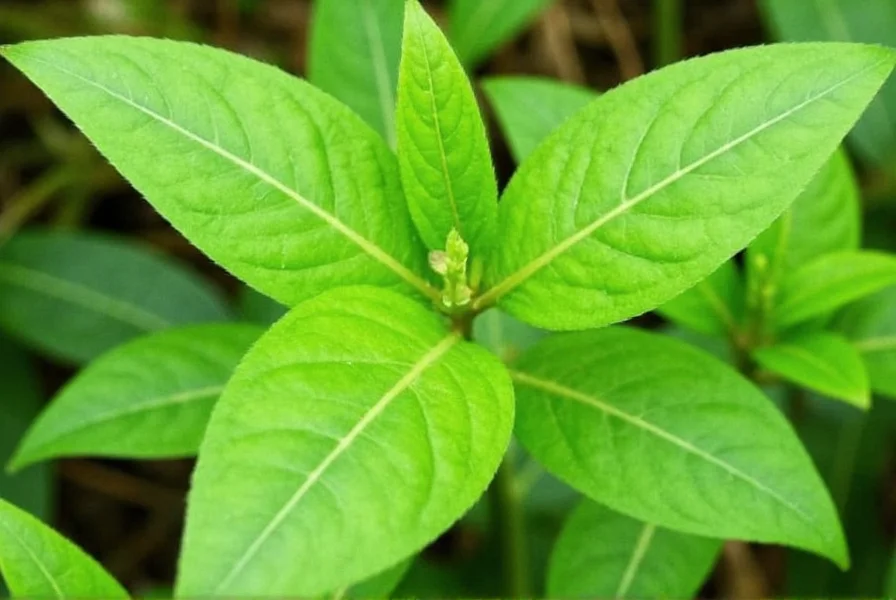Ginger leaves come from the Zingiber officinale plant and are long, slender, and green with a mild ginger flavor. Unlike the more commonly used ginger root, the leaves are edible and used in various Asian cuisines for wrapping foods and adding subtle flavor. They contain beneficial compounds like gingerols but in different concentrations than the root. Understanding ginger leaf uses in cooking and traditional applications provides valuable insight into this often-overlooked part of the ginger plant.
Understanding Ginger Plant Anatomy
The ginger plant produces both rhizomes (commonly called ginger root) and leaves. While most people only know the knobby rhizome, the entire plant offers culinary and potential health benefits. Ginger leaf identification is straightforward—they're long, narrow, and grow in pairs along the stem, reaching 6-12 inches in length when mature. The leaves have a delicate, grassy appearance with parallel veins running their entire length.

Nutritional Profile of Ginger Leaves
Ginger leaves contain different nutritional compounds compared to the rhizome. While research is limited specifically on ginger leaves, studies suggest they contain:
| Compound | Presence in Leaves | Notes |
|---|---|---|
| Gingerols | Moderate | Less concentrated than in rhizome |
| Zingerone | Present | Contributes to mild flavor profile |
| Vitamin C | Trace amounts | Less than rhizome |
| Antioxidants | Present | Different profile than rhizome |
When comparing ginger root vs leaf nutrition, the rhizome generally contains higher concentrations of active compounds, but the leaves offer their own unique profile with a milder taste that works well in certain culinary applications.
Culinary Applications of Ginger Leaves
Ginger leaf cooking uses differ significantly from the rhizome. Their primary culinary value comes from:
- Food wrapping - In Indonesian and Malaysian cuisine, young ginger leaves wrap fish or meats before grilling
- Flavor infusion - Adding subtle ginger notes to broths and soups without overpowering
- Garnish - Thinly sliced leaves add visual appeal and mild flavor to dishes
- Tea preparation - Fresh or dried leaves make a delicate ginger leaf tea with less heat than root-based teas
For those exploring ginger leaf recipes, try using young leaves in salads or as a wrap for rice dishes. The leaves work particularly well with fish, chicken, and vegetable preparations where a strong ginger flavor would be overwhelming.
Growing Ginger for Leaf Production
Learning how to grow ginger leaves requires understanding the plant's tropical origins. Ginger thrives in warm, humid conditions with partial shade. For successful ginger leaf cultivation:
- Plant rhizomes in well-draining, nutrient-rich soil with the growth buds facing upward
- Maintain consistent moisture without waterlogging (ginger prefers humid conditions)
- Provide partial shade, especially in hotter climates
- Harvest leaves when they're young and tender for best flavor
- Regularly trim leaves to encourage new growth without harming the plant
Ginger leaf harvesting should be done selectively—taking only a few leaves from each plant at a time. This sustainable approach ensures continued growth while providing fresh leaves for culinary use. Container gardening works well for ginger in cooler climates, allowing you to bring plants indoors during winter months.

Safety Considerations and Proper Storage
When using ginger leaves, proper storage extends their shelf life. Fresh leaves last 3-5 days in the refrigerator when wrapped in a damp paper towel and placed in a plastic bag. For longer storage, freeze leaves in ice cube trays with water or oil.
Ginger leaf safety considerations include:
- Always wash leaves thoroughly before use
- Use only leaves from plants grown without pesticides
- Consume in moderation as part of a balanced diet
- Consult healthcare providers if you have gallstone issues or are taking blood thinners
Unlike the rhizome, ginger leaves don't have the same strong medicinal properties, so they're generally considered safe for culinary use. However, those with ginger allergies should avoid all parts of the plant.
Traditional Uses Across Cultures
Ginger leaf traditional medicine applications vary across Southeast Asia. In Indonesia, ginger leaf tea serves as a digestive aid. Thai cuisine uses young leaves wrapped around fish for steaming, infusing subtle flavor while keeping the fish moist. Vietnamese cooking sometimes incorporates finely shredded ginger leaves into dipping sauces.
While ginger root benefits have been more extensively studied, ginger leaf traditional uses suggest potential digestive and anti-inflammatory properties, though scientific research specifically on the leaves remains limited compared to the rhizome.
Practical Tips for Ginger Leaf Enthusiasts
For those interested in incorporating ginger leaves into their cooking:
- Look for fresh, vibrant green leaves without yellowing or spots
- Use young leaves for raw applications and older leaves for cooking
- Pair with coconut milk, lemongrass, and kaffir lime for authentic Southeast Asian flavors
- Experiment with ginger leaf pesto as an alternative to traditional basil pesto
- Try adding finely chopped leaves to omelets or scrambled eggs
Understanding ginger leaf vs stem differences helps in proper preparation—focus on the flat leaf portion rather than the tougher stem when harvesting for culinary use.
Frequently Asked Questions
Can you eat ginger leaves raw?
Yes, young ginger leaves can be eaten raw when tender. They work well thinly sliced in salads or as a garnish. Older leaves become fibrous and are better suited for cooking or tea preparation rather than raw consumption.
How do ginger leaves differ from turmeric leaves?
While both come from the Zingiberaceae family, ginger leaves have a more grassy appearance with parallel veins, while turmeric leaves are broader with a more pronounced central vein. Ginger leaves have a mild ginger flavor, whereas turmeric leaves have a more earthy, turmeric-like aroma without the bright yellow color of the rhizome.
What's the best way to store fresh ginger leaves?
Store fresh ginger leaves wrapped in a damp paper towel inside a plastic bag in the refrigerator. They'll stay fresh for 3-5 days. For longer storage, freeze leaves in ice cube trays with water or oil, or dry them for tea preparation.
Can you grow ginger leaves indoors?
Yes, ginger grows well in containers indoors with proper care. Use a wide pot with drainage, keep soil consistently moist but not waterlogged, and provide bright, indirect light. Indoor ginger may grow more slowly but will produce usable leaves within 6-8 months of planting.
Are ginger leaves safe during pregnancy?
Ginger leaves used in culinary amounts are generally considered safe during pregnancy, similar to ginger root. However, pregnant women should consult their healthcare provider before consuming ginger products regularly, as excessive consumption might not be advisable.











 浙公网安备
33010002000092号
浙公网安备
33010002000092号 浙B2-20120091-4
浙B2-20120091-4